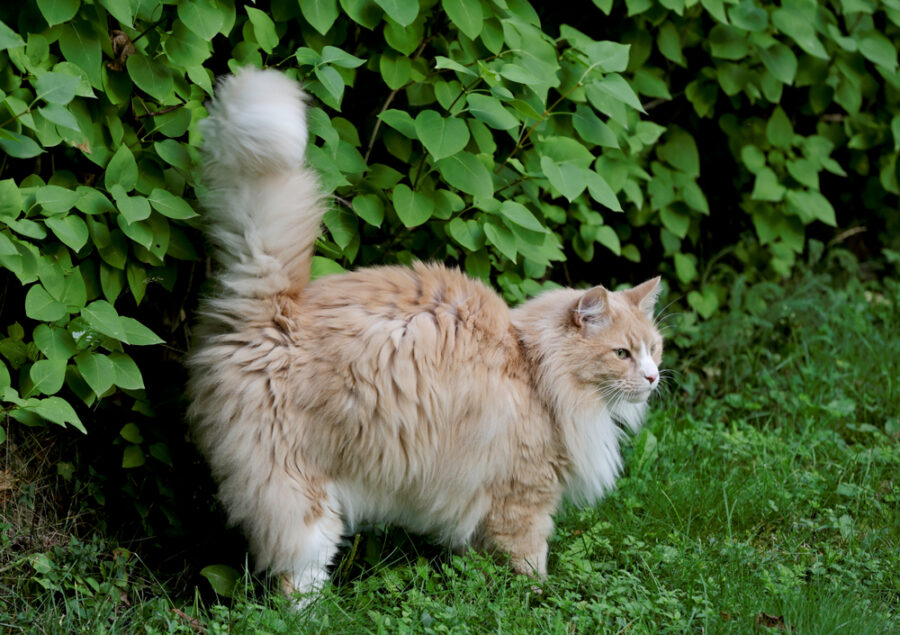A recent study investigates feline urine spraying on vertical objects.
Chemical communication plays a pivotal role in territorial ownership and social interaction among members of the Felidae species, including domestic cats. One of the most commonly observed behaviors is urine spraying on vertical objects, a distinct form of scent marking that signals territorial boundaries and habitat ownership.
The Composition of Sprayed Urine
Recent research had shed light on the composition of sprayed urine. According to Professor

Masao Miyazaki, research project leader, the study data indicate that sprayed urine
originates from bladder urine without being supplemented by chemicals from other secretory glands, such as the anal sacs. This distinction is crucial in understanding the mechanisms behind the potent scent emitted by sprayed urine.
The Power of Volatile Organic Compounds (VOCs)
Despite its simple composition, sprayed urine possesses a remarkable ability to emit volatile organic compounds (VOCs) when smeared on vertical objects. These VOCs contribute to the distinctive odor profile associated with urine spraying and serve as potent chemical signals for communication.
Proteinuria’s Role in Scent Marking
Proteinuria, a condition characterized by the excretion of feline-specific proteins, emerges as a key factor in enhancing the efficacy of sprayed urine as a scent marker. Specifically, the presence of a carboxylesterase enzyme associated with proteinuria reduces the surface tension of urine and increases its adhesion to vertical surfaces.
Enhanced Adhesion and Odor Emission
The enhanced adhesion of urine to vertical surfaces, facilitated by proteinuria-related changes, ensures that sprayed urine remains on the targeted objects. This prolonged contact leads to the emission of high levels of VOCs, intensifying the scent marking effect and reinforcing territorial boundaries.
Implications for Veterinary Practice
Understanding the mechanisms behind urine spraying behavior in cats has important implications for veterinarians. This study may provide insights into addressing the distinct smell associated with sprayed urine. Veterinarians can utilize this knowledge to better interpret feline scent marking behaviors, diagnose underlying conditions such as proteinuria, and develop targeted interventions.
The study has enhanced our understanding of how cats assert their territorial presence through chemical signals, and how proteinuria plays a significant role in enhancing scent marking efficacy. This newfound knowledge not only enriches our appreciation of feline behavior, but also provides veterinary care practices with valuable urology information.







